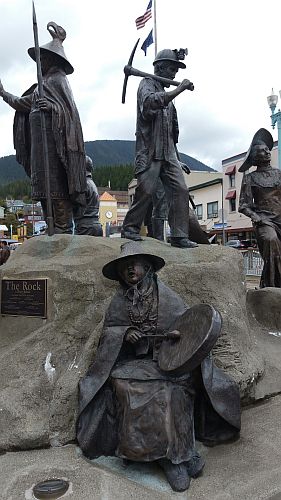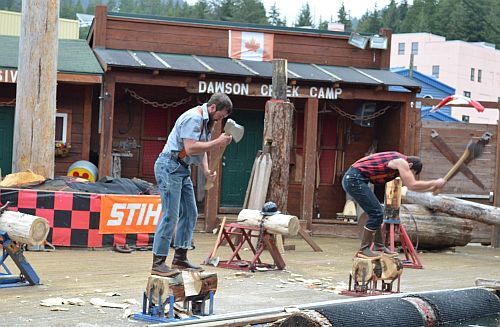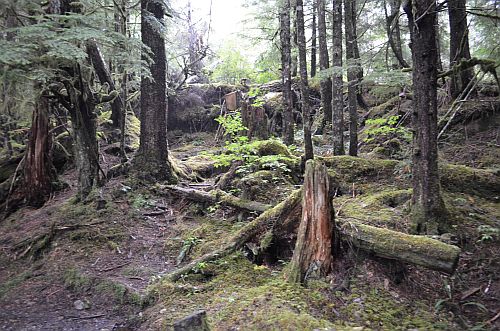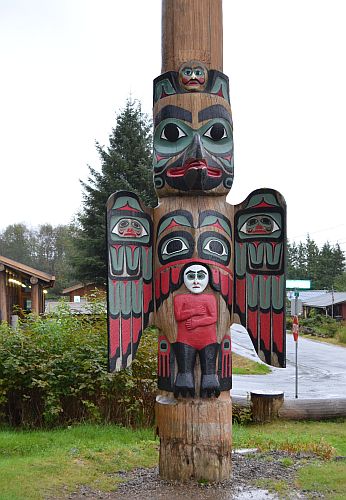 Index
Index

Ketchikan is the southeasternmost city in Alaska. It is the sixth most populous city in the state with 8,250 inhabitants within the city limits. "Ketchikan" comes from the Tlingit name for the creek, Kitschk-hin. The Saxman Native Village near Ketchikan has the world's largest collection of standing totem poles.

Cruise ships usually stop for about eight hours in Ketchikan. This is enough time to catch a lumberjack show and visit the Saxman Native Village. Other popular activities include wilderness exploration in Alaska's rain forest or taking a seaplane flight to the Misty Fjords National Monument, a nature preserve where the water inlets are surrounded by mountains up to 3,000 feet above sea level.


Dave Rubin's bronze monument "The Rock" was unveiled on July 4th, 2010. It features seven life-size figures from Ketchikan's heritage: Chief Johnson, a logger, a fisherman, a miner, an aviator, a Native woman drumming, and an elegant lady in her 1890s dress. The monument is by the main pier where large cruise ships dock.

Ketchikan has a variety of stores selling anything from sweaters and quilts to foodstuffs like smoked salmon.

Ketchikan has the reputation of being the "Rain Capital of Alaska". The average annual rainfall is over 200 inches.

Ketchikan was originally founded in 1885 as a salmon cannery site. The city's livelihood was initially fishing, earning the title "Salmon Capital of the World".

Some stores in Ketchikan sell unique items that may not be found anywhere else in the world. The Alaska Fine Art gallery exhibited a woolly mammoth tusk more than 10,000 years old that had been elaborately carved by sculptor Eddie Lee. Other items in the gallery included a caribou antler carved like a flying eagle and figurines made of jade.

A lumberjack show demonstrates the competitive skills of modern day lumberjacks. The contests include ax throwing, pole climbing, hand sawing, log cutting and log rolling.
Saxman Native Village
The Tongass National Forest in Southeast Alaska is the largest national forest in the United States. Most of its 17 million acres (69,000 km2) are part of the temperate rain forest in the Pacific ecoregion. The forest hosts many species of rare flora and fauna.

Moss grows thickly under the canopy of the forest. The Saxman Village house can only be reached by walking along a trail in these woods.

The Saxman Village has the largest collection of standing totem poles. Totem poles are sculptures carved on poles made from large trees, mostly western red cedar. The carvings represent cultural symbols of tribal legends, clan lineages, or notable events. Stylized bears, ravens, beavers and eagles are frequent motifs on totem poles.

Nathan Jackson is an Alaska Native artist of Tlingit heritage. He is best known for his totem poles, but he works in a variety of media. His work has included canoes, carved doors, wood panel clan crests, masks, and jewelry.